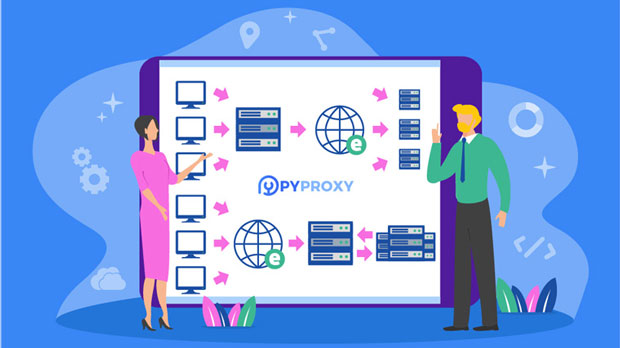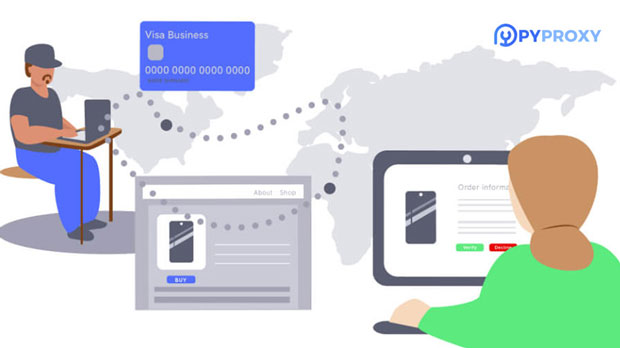How can SOCKS5 proxies in Michigan help bypass regional restrictions?
In today's Internet era, regional restrictions are a major obstacle that many users encounter when accessing specific websites and applications. Whether due to geographical limitations, content censorship, or the inability to access globally popular services in certain regions, users often hope to overcome these limitations through certain technological means. socks5 proxy is a widely used technology that can effectively help users bypass regional restrictions, especially when configured through specific geolocation servers (such as Michigan), providing significant advantagesSOCKS5 proxy is a network protocol that helps users hide their real IP address and access the network through the server's location by forwarding their network traffic through a proxy server. This technology can not only overcome geographical limitations, but also improve anonymity and avoid being tracked. We will delve into how SOCKS5 agents in Michigan bypass regional restrictions, from technical principles to practical applications, revealing the powerful potential of this method to readers one by one1. Working principle of SOCKS5 proxy To understand how SOCKS5 proxy can help bypass regional restrictions, it is first necessary to master its basic working principles. SOCKS5 (Socket Secure Version 5) is a proxy protocol for Internet connection. Unlike traditional HTTP proxies, socks5 proxies can handle various types of network traffic, including protocols such as HTTP, HTTPS, FTP, etc., providing higher flexibility and compatibilitySOCKS5 proxy forwards the user's network requests to the proxy server, making the user's IP address the IP address of the proxy server, so that the user can use the geographic location of the proxy server for network access. For example, if you are located in China but wish to access content only available in the United States, using a socks5 proxy server located in Michigan can help you bypass geographical restrictions as if you were accessing from MichiganCompared to other proxy protocols, SOCKS5 provides stronger anonymity because it not only modifies the user's IP address, but also hides the user's DNS queries, thereby reducing the risk of being tracedII. Challenges of Regional Restrictions and the Breakthrough Advantages of SOCKS5Regional restrictions are usually caused by the following reasons:1. Copyright and Content Authorization: Many streaming services can only provide content in specific countries or regions due to copyright issues2. Geographic blocking: Certain countries or regions may block specific websites or services for reasons such as censorship, government control, or economic interests3. Pricing strategy: Some online stores offer different product pricing and discounts based on users' geographical location, and certain regions may experience higher prices or be unable to participate in promotional activitiesSOCKS5 proxy provides significant advantages by hiding the user's true geographic location and bypassing these regional restrictions. Here are several key advantages of SOCKS5 proxy when bypassing regional restrictions:-Hidden IP address and geographic location: SOCKS5 proxy hides the user's original IP address and uses the proxy server's IP address for network access. This means that users can access content limited to within the United States through a proxy server located in Michigan -Bypass content filtering and censorship: Governments or enterprises in many countries and regions will censor and block Internet traffic, especially for some sensitive websites or social media. By using SOCKS5 proxy, users can avoid these blockades and access restricted websites normally-Accessing global content: For example, many video streaming platforms restrict users in certain regions from viewing specific content. By using SOCKS5 proxy in Michigan, users can "disguise" themselves as American users to access specific video content in that regionIII. Application Scenarios of SOCKS5 Proxy in PracticeSOCKS5 proxy has a wide range of application scenarios, especially in important tasks that require bypassing regional restrictions or improving anonymity, where it performs particularly well. Here are several common application scenarios:1. Access to geographically restricted streaming services:There are regional restrictions on streaming services worldwide. Users from different regions can watch different programs and movies. For example, American users may have access to a complete content library, while users from other countries may only have access to a portion of it. By using SOCKS5 proxy in Michigan, users can disguise themselves as American users, break through these geographical restrictions, and access complete Netflix content2. Breaking through government censorship and blockade:In some countries, the Internet will be closely censored and blocked to restrict access to certain websites. These restrictions not only apply to social media, but also to news websites, search engines, and even some e-commerce platforms. The use of SOCKS5 proxy can help users bypass these blockades and restore free access to the global Internet, especially in the acquisition of sensitive information3. Anonymous browsing and privacy protection:SOCKS5 proxy is not only used to bypass regional restrictions, but it can also effectively protect users' privacy. When a user uses SOCKS5 proxy, the proxy server will make network requests on behalf of the user, thereby hiding the user's real IP address. This is particularly important for users who value privacy and security, as it can effectively prevent the leakage of personal information and online tracking4. Avoiding pricing differences and regional discounts:Many e-commerce platforms and online stores customize different pricing strategies based on users' geographical locations. By using SOCKS5 proxy, users can "change" their virtual location and enjoy discounts or low-priced products in different regions. For example, accessing US e-commerce websites through SOCKS5 agents located in Michigan may result in more favorable prices compared to users in other regionsIV. Special Advantages of Michigan SOCKS5 ProxyAlthough SOCKS5 proxy itself has a wide range of applications, choosing a proxy server for a specific region brings additional advantages. Michigan, as a typical US region, has the following special advantages:-Good server network and stability: Michigan, as one of the important Internet hubs in the United States, has high-quality network infrastructure and stable server environment to ensure efficient and fast data transmission-Suitable for access within the United States: If users primarily need to access services or content within the United States, choosing a SOCKS5 proxy server in Michigan is undoubtedly an ideal choice. Through this proxy, users can enjoy the same online experience as local users, including access to exclusive US services such as streaming, online gaming, and social media-Avoiding congestion issues in other popular cities: Many SOCKS5 proxy service providers are typically concentrated in big cities such as New York and Los Angeles. Proxy servers in Michigan may be less commonly used, thus avoiding congestion that may occur with popular servers and ensuring a more stable and fast network connectionFifth, how to choose and configure SOCKS5 proxy in MichiganTo utilize SOCKS5 proxy in Michigan, the first step is to choose a reliable proxy provider and configure it appropriately. The following are several key steps for selection and configuration:1. Choosing a high-quality SOCKS5 proxy service provider: Choosing a well-known and reputable proxy service provider is crucial, especially to ensure the provision of server options in Michigan. Excellent service providers typically provide stable network connections, high-speed bandwidth, and strong customer support2. Ensuring the security of proxies: The security of proxy services is crucial. Ensure that the selected SOCKS5 proxy provides encryption support to protect users' network security, prevent data breaches and malicious attacks3. Configure proxy settings: When configuring SOCKS5 proxy on the device, users need to enter the IP address and port number of the proxy server, and set the proxy protocol to SOCKS5 in the browser or operating system. When configuring, make sure to select a server located in Michigan and bypass regional restrictions4. Test connection speed and stability: After completing the configuration, conduct speed and stability tests to ensure the quality of the network connection and avoid affecting the user experience due to poor connectionVI. ConclusionSOCKS5 proxy technology provides users with powerful ability to overcome regional restrictions, especially when selecting proxy servers in specific regions, which can effectively improve access efficiency and privacy protection. With the help of SOCKS5 proxy servers in Michigan, users can access streaming media, online stores, social media, and other services within the United States, bypass government censorship and content blocking, and achieve a more free and secure online experience. By selecting and configuring SOCKS5 proxies reasonably, users can not only access content that is geographically restricted and blocked, but also protect personal privacy on multiple platforms and avoid information leakage. Especially with the help of SOCKS5 proxy servers in Michigan, users can access streaming services, online stores, social media platforms, and bypass possible network censorship and content blocking within the United States Choosing the appropriate server location and configuration is crucial when using SOCKS5 proxy. Through Michigan's proxy server, users can not only enjoy stable and fast network connections, but also reduce latency and improve access speed. This is particularly important for streaming media viewing, online shopping, and social media interaction, especially for activities that require high bandwidth and low latency. In addition, the SOCKS5 proxy protocol also supports a wider range of application scenarios, such as anonymous browsing, data scraping, and online gaming. To sum up, SOCKS5 proxy technology provides users with a reliable network freedom solution to ensure privacy and security while enjoying Internet resources
2025-01-09

























































